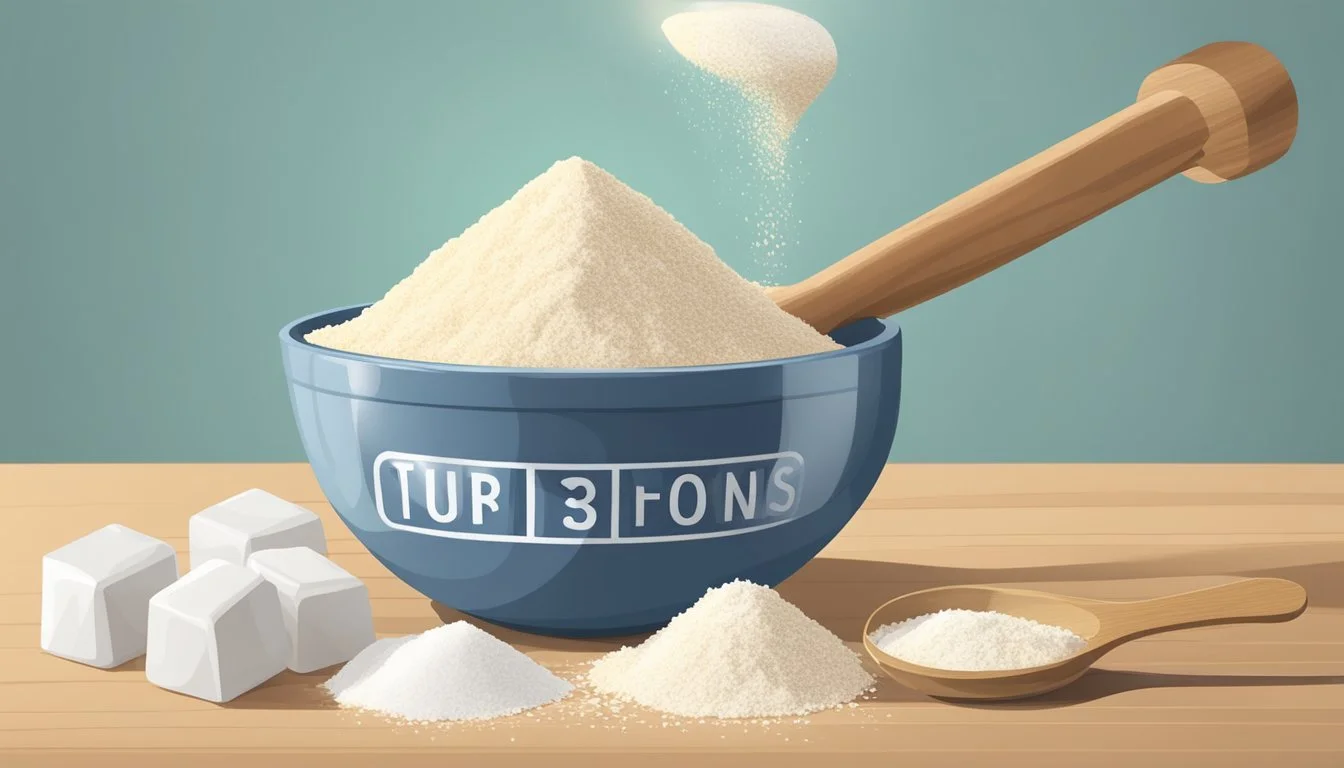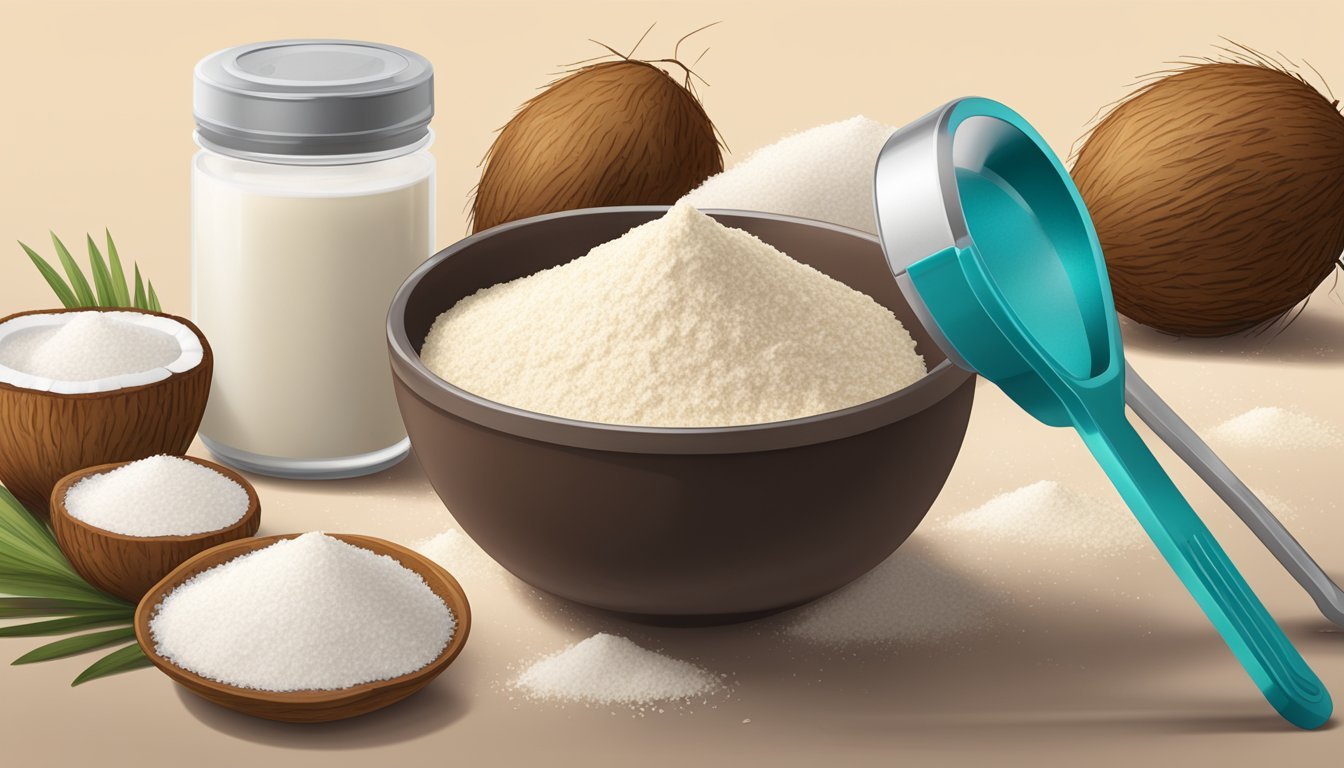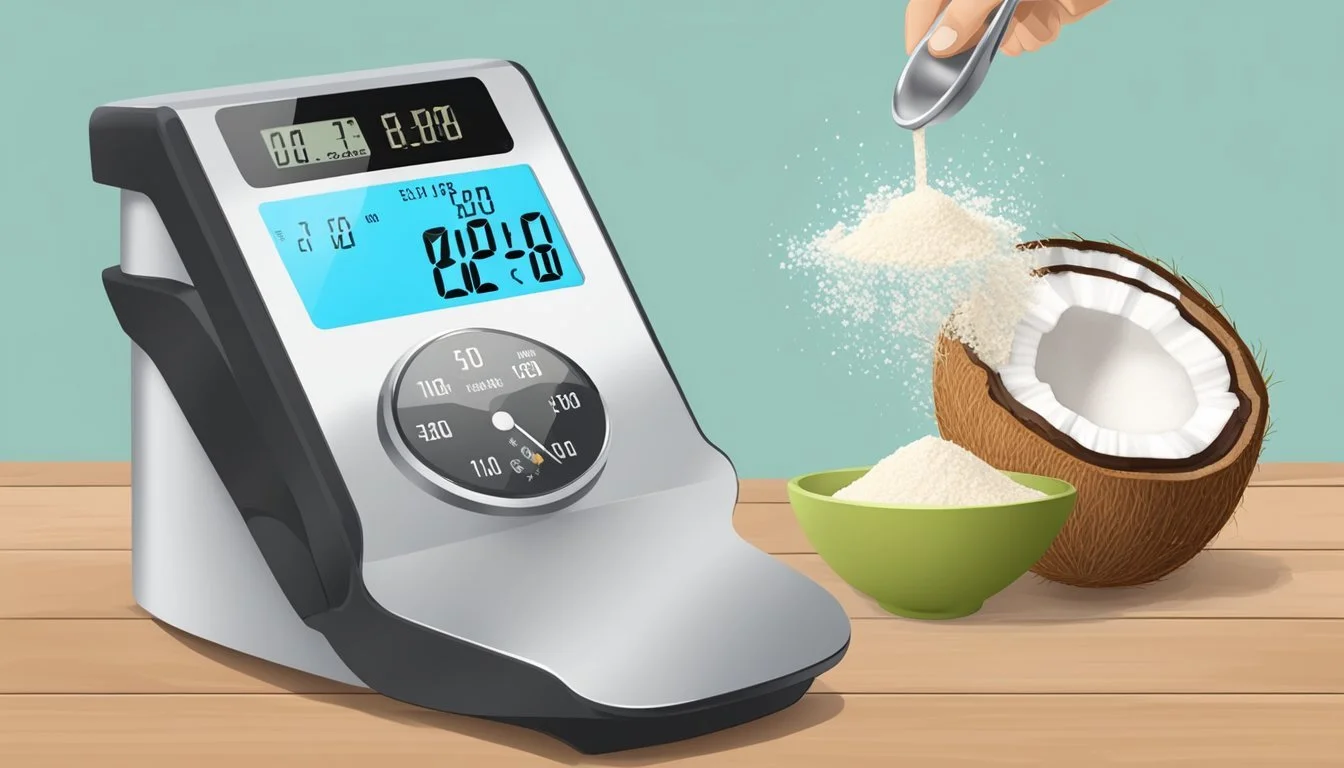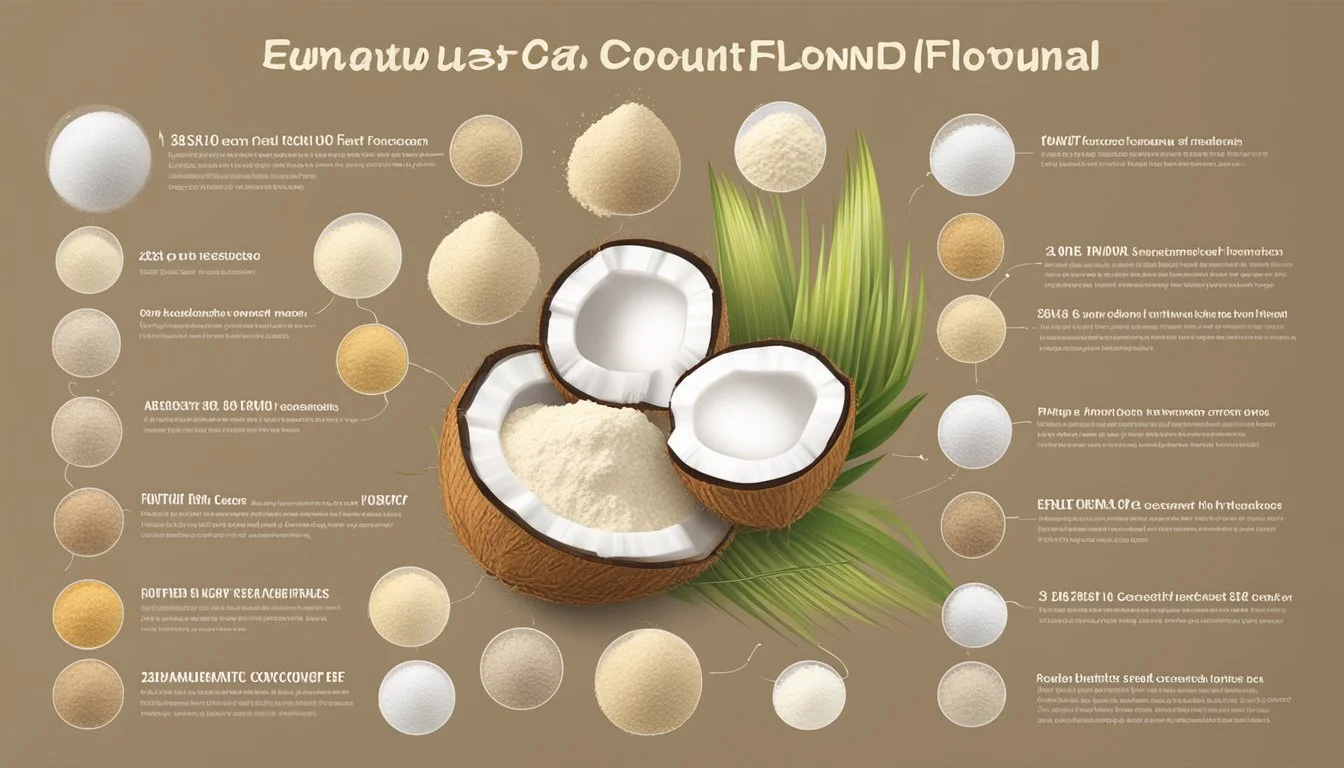How Many Tablespoons in a Pound of Coconut Flour?
Unveiling Measurement Conversions
Converting coconut flour from pounds to tablespoons is a task often encountered by bakers and individuals adhering to specific dietary guidelines. Coconut flour, a staple in gluten-free and low-carbohydrate baking, is denser than traditional grain-based flours, making the conversion process critical for recipe success. As it stands, coconut flour's conversion rates are not directly proportional due to its unique properties, such as high fiber content and absorbency.
One pound of coconut flour equates to a volume that is not uniform across all brands due to variations in flour density and grind size. However, a rough estimation used by many culinary professionals suggests that one pound of coconut flour translates to approximately 64 tablespoons. This estimate serves as a starting point for bakers and culinary enthusiasts when measuring out their coconut flour without a scale, understanding that slight deviations may occur.
When incorporating coconut flour into recipes, it is essential for bakers to consider its high absorbency rate. Therefore, adjustments to liquid ingredients in recipes might be necessary to achieve the desired texture and consistency. By recognizing the importance of these conversions and the unique characteristics of coconut flour, bakers can ensure their creations maintain the intended quality and taste.
Understanding Coconut Flour
Coconut flour is derived from the dried meat of coconuts and stands out for its high fiber content, gluten-free nature, and distinct baking characteristics. Bakers often consider it when seeking alternatives to traditional wheat flours.
Characteristics of Coconut Flour
Coconut flour is highly absorbent, and due to its unique properties, it requires adjustments in baking recipes. It’s lightweight and powdery, which can lead to denser baked goods if not balanced with the right ingredients.
Coconut Flour vs. Wheat Flour
Absorbency: Coconut flour is much more absorbent than wheat flour, including all-purpose, cake, or bread flour.
Usage: A common substitution ratio is 1:4, meaning that one would use 1/4 cup of coconut flour for every cup of wheat flour.
Additional Ingredients: Recipes often require additional eggs or liquid to compensate for the dryness of coconut flour.
Nutritional Values of Coconut Flour
Fiber Content: Coconut flour is particularly high in fiber, promoting digestive health.
Gluten-Free: It is naturally gluten-free, making it a suitable option for those with gluten sensitivities.
Macro-nutrients: Per 100 grams, coconut flour typically contains approximately 60 grams of fiber, 20 grams of protein, and a lower fat content than wheat flour.
By considering these factors, one appreciates the unique qualities of coconut flour in both baking and nutritional contexts.
Measuring Units in Baking
Accurate measuring is fundamental to baking success, as the precise ratio of ingredients can determine the outcome of a recipe. In this section, we will explore the differences between volume and weight measurements and the common units used in baking.
Volume vs. Weight
Volume measurements are common in home baking and usually involve measuring cups and spoons. These are ideal for measuring liquids but can lead to inconsistency with dry ingredients. Weight measurements, on the other hand, provide more accuracy and are often preferred in professional settings. They rely on scales and are expressed in units like ounces (oz), grams (g), and pounds (lb).
Volume Units:
Teaspoons (tsp)
Tablespoons (tbsp)
Fluid ounces (fl oz)
US Cups
Weight Units:
Ounces (oz)
Pounds (lb)
Grams (g)
Common Baking Measurements
Below is a table that includes some of the common conversions between tablespoons and their respective weight in grams for coconut flour, which is particularly useful for gluten-free baking:
Tablespoons (tbsp) Coconut Flour (grams) 1 7 2 14 3 21 4 28
To convert these measurements into pounds, consider that one pound is equivalent to 453.592 grams. Therefore, when baking, it’s essential to note the ingredient-specific weight since the same volume of different ingredients will not weigh the same. For example, a cup of coconut flour will weigh differently from a cup of all-purpose flour. Bakers should follow recipes closely and be aware of these differences for the best results.
Conversion Essentials
In the realm of baking, precise conversion between volume and weight is crucial for successful results. This section outlines how to convert between tablespoons and pounds of coconut flour, utilize converter tools, and offers tips and tricks for accurate measurement.
From Tablespoons to Pounds
A pound of coconut flour translates to approximately 59 US tablespoons. This correlation is fundamental for converting recipes or adjusting quantities. To illustrate, here is a simple table for common conversions:
Pounds of Coconut Flour Tablespoons of Coconut Flour 0.25 ~14.75 0.5 ~29.5 0.75 ~44.25 1 ~59
Using a Converter Tool
Many online converter tools can provide the exact conversion of coconut flour from grams to tablespoons and vice versa. These tools are especially useful for culinary professionals and students who seek precise unit conversions for their recipes. They often include a complete list of conversion options for all flour types, accommodating a broad spectrum of baking needs.
Conversion Tips and Tricks
Tips for accurate flour conversions include:
Use a spoon to fluff up the coconut flour before measuring to avoid compacting.
Level the tablespoon measurements using the back of a knife for consistency.
Add extra eggs when substituting coconut flour in recipes that call for wheat flour due to its high absorbency.
Tricks to ensure accuracy might involve:
A kitchen scale for weighing flour to obtain the most precise units.
Storing coconut flour in a consistent environment to avoid density changes due to moisture or compaction.
Recipe Adjustments with Coconut Flour
When using coconut flour in baking, meticulous adjustments to other ingredients are essential due to its unique properties.
Altering Recipes for Coconut Flour
Coconut flour behaves differently from wheat flour; it is not a straight swap. When substituting wheat for coconut flour, the general ratio is 1:4; for every 1 cup of wheat flour, use only 1/4 cup of coconut flour. This adjustment is crucial to maintain the structure and texture of the dish. Additionally, for every 1/4 cup of coconut flour added, incorporating at least two extra eggs is advised to provide moisture and help bind the ingredients.
Sugar adjustments are also notable. Coconut flour imparts a slight sweetness, reducing the need for granulated sugar or honey. Adjust recipes by decreasing the added sweeteners by 25-50% to balance the natural sweetness of the coconut flour.
Hydration Considerations
Coconut flour is very absorbent, requiring an increase in water or other liquids in the recipe by about 10-25% more than what's needed for traditional wheat flour recipes. This absorption capacity can affect hydration and thus the finished product's moistness. Moreover, the manner of mixing the ingredients matters; blend egg yolks into the flour and other dry components, and separately whip the egg whites until soft peaks form before folding them into the initial mixture to add lightness to the baked goods. For fats like butter, no significant adjustment is usually necessary unless the recipe is specifically sensitive to moisture content.
Culinary Applications of Coconut Flour
Coconut flour is a versatile ingredient often used in a variety of culinary contexts ranging from home kitchens to professional baking environments. Known for its high fiber content and gluten-free nature, it has become a staple in many baking recipes and dietary regimens.
Baking with Coconut Flour
When baking with coconut flour, one must consider its high absorbency. This means that it requires more liquid than other flours. For instance, a cake recipe might demand an increased number of eggs to maintain moisture. Similarly, bread and pastry recipes are adjusted to include additional water or milk. Techniques often include letting the batter rest to allow the flour to fully absorb the liquids or combining coconut flour with other flours like almond to balance out the density.
Specialty Diets and Coconut Flour
Coconut flour is particularly celebrated in specialty diets such as gluten-free regimens. Its absence of gluten makes it an ideal choice for individuals with celiac disease or gluten intolerance. The flour is also used in low-carbohydrate diets since it is lower in carbs compared to traditional wheat flours. Home bakers have embraced coconut flour for making gluten-free pizza (What wine goes well with pizza?) crusts and other dishes that typically rely on wheat-based flours.
Culinary Schools and Coconut Flour Education
Culinary colleges and international culinary educational institutions are integrating coconut flour into their curriculums. This is reflective of a shift towards teaching the art of baking with alternative flours, appealing to both professional chefs and culinary students. As part of the culinary arts, the use of coconut flour is taught as an essential skill for making a variety of gluten-free and health-conscious baked goods.
Additional Ingredients and Substitutes
When opting for alternatives to coconut flour, it's crucial to consider each substitute's characteristics, such as density and moisture content, to ensure a successful recipe outcome.
Coconut Flour Alternatives
Almond Flour: A common coconut flour replacement is almond flour, which offers a nutty flavor and tender texture. However, due to its density, for every 1 cup of coconut flour, 4 cups of almond flour should be used. It is richer in protein, carbs, and fat, requiring an adjustment in recipe moisture.
Cassava Flour: Maintains a similar texture to all-purpose flour and can replace coconut flour using a 4:1 ratio—four parts cassava flour to one part coconut flour.
Other Flours:
Rye Flour: Known for its dense and hearty baked goods, it might require mixing with lighter flours to mimic coconut flour's texture.
Oats (Oat Flour): Another gluten-free option, which may impart a chewier texture and slight sweetness.
Mixing Flours
Combining different types of flour can balance the structural and flavor components in baking.
Bread Flour: While higher in gluten, which gives bread its chewy texture, it can be mixed with lower-gluten flours to create a balance suitable for recipes initially intended for coconut flour.
Wheat Flour and All-Purpose Flour: These can be used in combination with gluten-free flours to enhance texture and binding properties. Keep in mind that wheat flour includes the entire kernel, while all-purpose flour is milled to a finer consistency.
By understanding the properties of these alternatives and how they interact when mixed, bakers can effectively substitute for coconut flour and still achieve desirable results in their baked goods.
Tools and Techniques
When converting coconut flour from weight to volume, precision is key. The right tools and meticulous technique ensure accurate results, crucial for successful culinary outcomes.
Selecting the Right Measuring Tools
One must select the appropriate measuring devices for both weight and volume. For weight, a digital kitchen scale is indispensable as it provides the most accurate measurement of a pound of coconut flour. When it comes to volume, measuring spoons are preferred. Ideally, one should use standard US tablespoons, as these are calibrated to hold approximately 14.79 milliliters of an ingredient.
Accuracy in Ingredient Measuring
Technique is just as important as the tools used. To measure coconut flour accurately, one must gently spoon the flour into the measuring tablespoon and level it off with a straight edge, avoiding packing or shaking the flour down. This method helps prevent introducing more coconut flour than necessary, which could affect the recipe's outcome. Time spent practicing this technique is an investment in one's culinary training, ensuring consistency and safety in recipe results.
Beyond the Kitchen
In the context of culinary education and career development, coconut flour serves as more than just an ingredient for recipes; it plays a role in shaping the skillsets of aspiring chefs and enriching their knowledge.
Coconut Flour in Culinary Arts Education
Culinary arts classes introduce students to a myriad of ingredients, including coconut flour. Given its unique properties and dietary benefits, coconut flour often features in courses that emphasize gluten-free and health-conscious cooking. In these classes, students learn precise measurement conversions, such as how many tablespoons are in a pound of coconut flour, which is crucial for mastering recipe accuracy and consistency.
Master chefs often remind their pupils that unlike all-purpose flour, coconut flour is highly absorbent, necessitating adjustments in liquid ratios. Thus, culinary training involving coconut flour equips students with the skills to adapt and think critically when faced with unconventional ingredients.
Exploring Culinary Careers
The use of coconut flour extends into numerous culinary careers, each requiring a deep understanding of ingredient behavior. Chefs in restaurant settings, pastry specialists, and R&D chefs working in food production must all be adept in utilizing various flours such as coconut flour for diverse client needs and product development.
Culinary colleges emphasize these ingredients in their curriculum to ensure that graduates are prepared for the challenges and dietary trends in the professional cooking landscape. The ability to skillfully incorporate coconut flour into recipes could be a notable asset for job-seeking chefs aiming to demonstrate cooking mastery and a commitment to accommodating dietary restrictions.
Advanced Topics
These advanced topics provide a deeper dive into the specific applications of coconut flour in more specialized areas of cooking. They address the conversion of coconut flour for use in a pizza oven environment and the customization of recipes with coconut flour to cater to dietary restrictions.
Building and Using a Pizza Oven
When it comes to building a pizza oven, the choice of materials is paramount for consistent heat retention and distribution. Traditionally, fire-bricks are used to construct either a rectangle or a round igloo shape oven. These ovens provide the ideal environment for baking pizza at high temperatures. For enthusiasts looking to roast coffee or bake with specialty ingredients like coconut flour, understanding the heat dynamics is crucial. For instance, coconut flour in pizza dough requires less amount due to its high absorbency, which might affect how the pizza bakes in such an intense heat scenario.
Customizing Recipes for Dietary Restrictions
Recipes may require alteration to suit dietary needs without compromising the quality or taste of the dish. Coconut flour becomes particularly relevant here as it provides a gluten-free alternative to traditional wheat flour. When baking with coconut flour, one must keep in mind that hydration levels and binding agents will differ. A general guideline is that for every pound of coconut flour, one should expect approximately 59 US tablespoons, a considerably smaller volume compared to traditional flour. This makes it ideal for individuals with dietary restrictions searching for lower-carb and higher-fiber options.
To provide an exact conversion for customized recipes:
Ingredient Coconut Flour (tbsp) Additional Components 1 lb Wheat Flour 59 tbsp Coconut Flour Additional eggs, as coconut flour is more absorbent
These specifications ensure that chefs and home cooks can accurately substitute coconut flour into their recipes, maintaining the desired texture and consistency within the dietary parameters.











